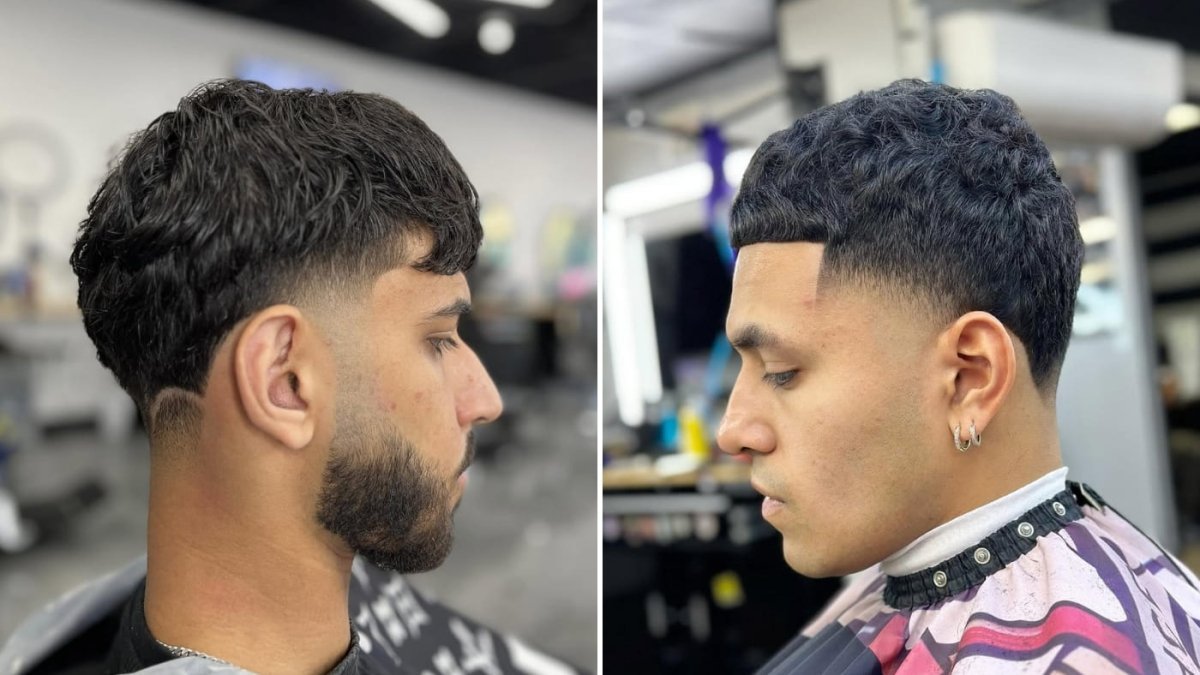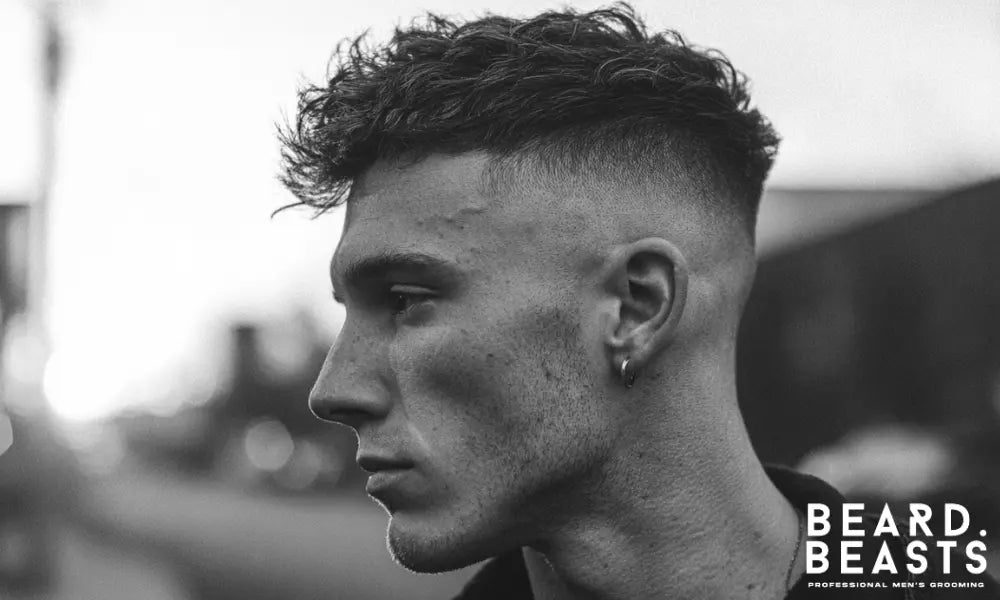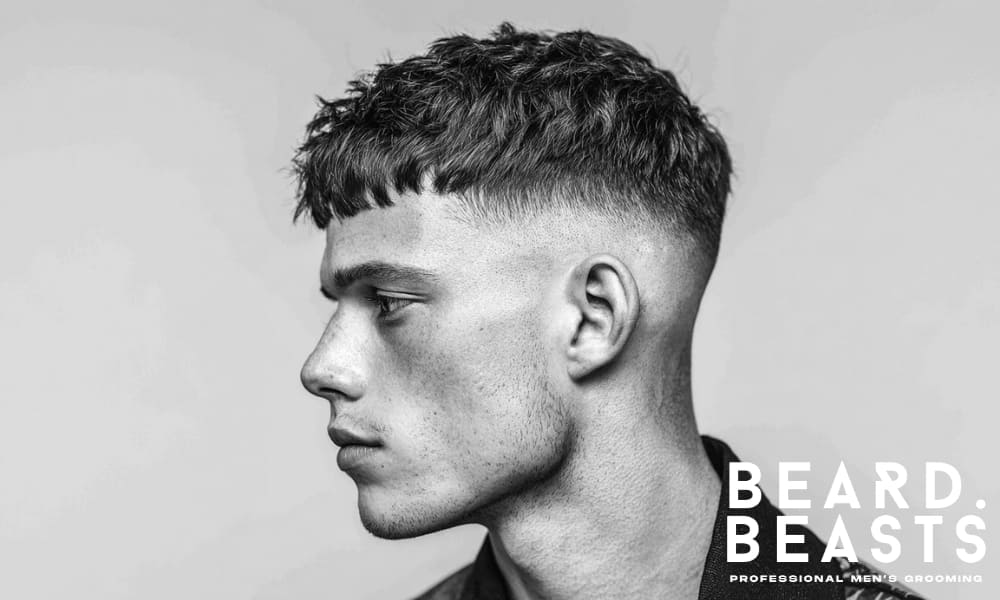Looking for a clean, modern hairstyle? Understanding the subtle yet significant differences between a mid taper vs high taper is crucial. Tapered haircuts are a cornerstone of men’s grooming, offering a sharp, refined look that complements various hair types and styles.
Whether you’re aiming for a polished professional appearance or a more contemporary, fashion-forward vibe, the right taper can make all the difference. It can enhance your facial features, perfectly frame your chosen hairstyle, and even impact how frequently you need to visit your barber.
This guide provides a detailed comparison of mid and high tapers, empowering you to make the best choice for your individual style and grooming routine.
What Is a Mid Taper?
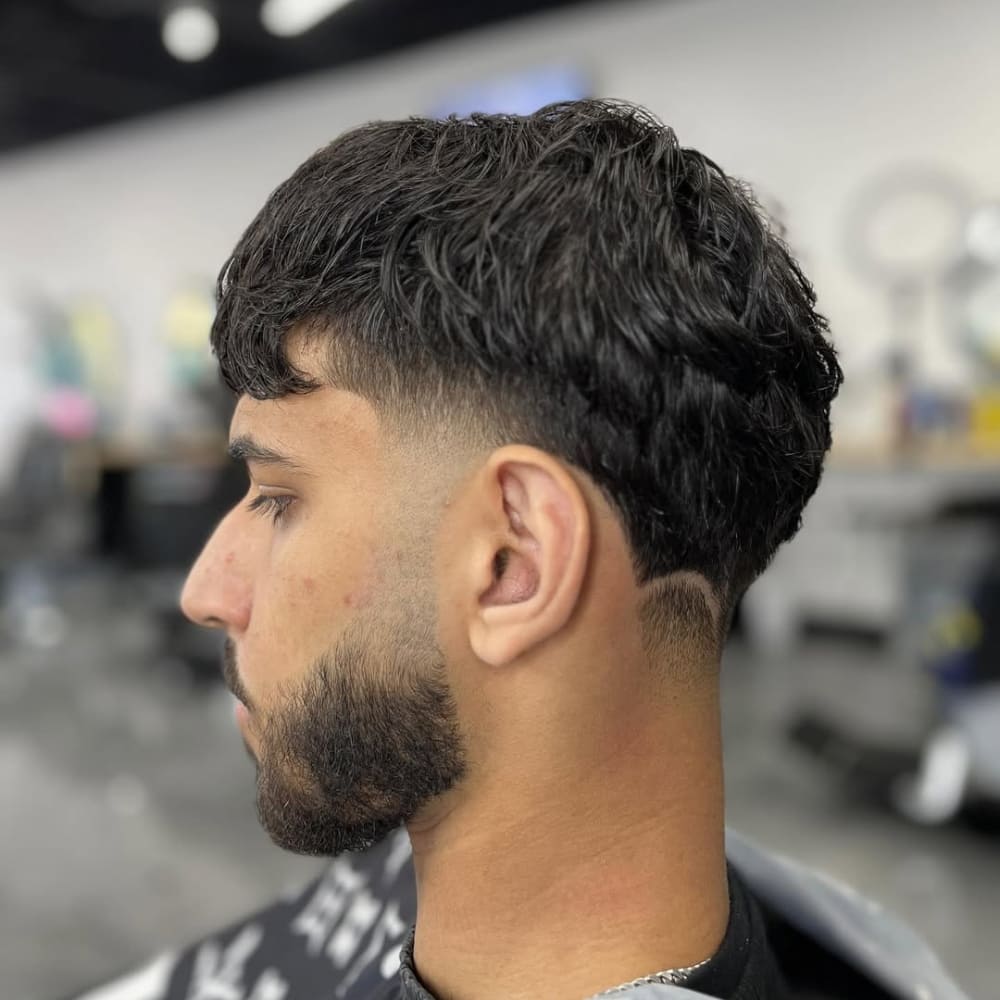
The versatile Mid Taper offers a balanced, refined look, making it a popular choice. Starting at or just above the ears, it gradually shortens towards the neckline, creating a clean transition that complements various styles, from quiffs to slick backs.
Its adaptability shines through – polished and professional yet stylish. Working well with straight, wavy, and curly hair, it enhances texture subtly. The Mid Taper is an excellent option for a refined, low-maintenance style suitable for any setting.
What Is a High Taper?
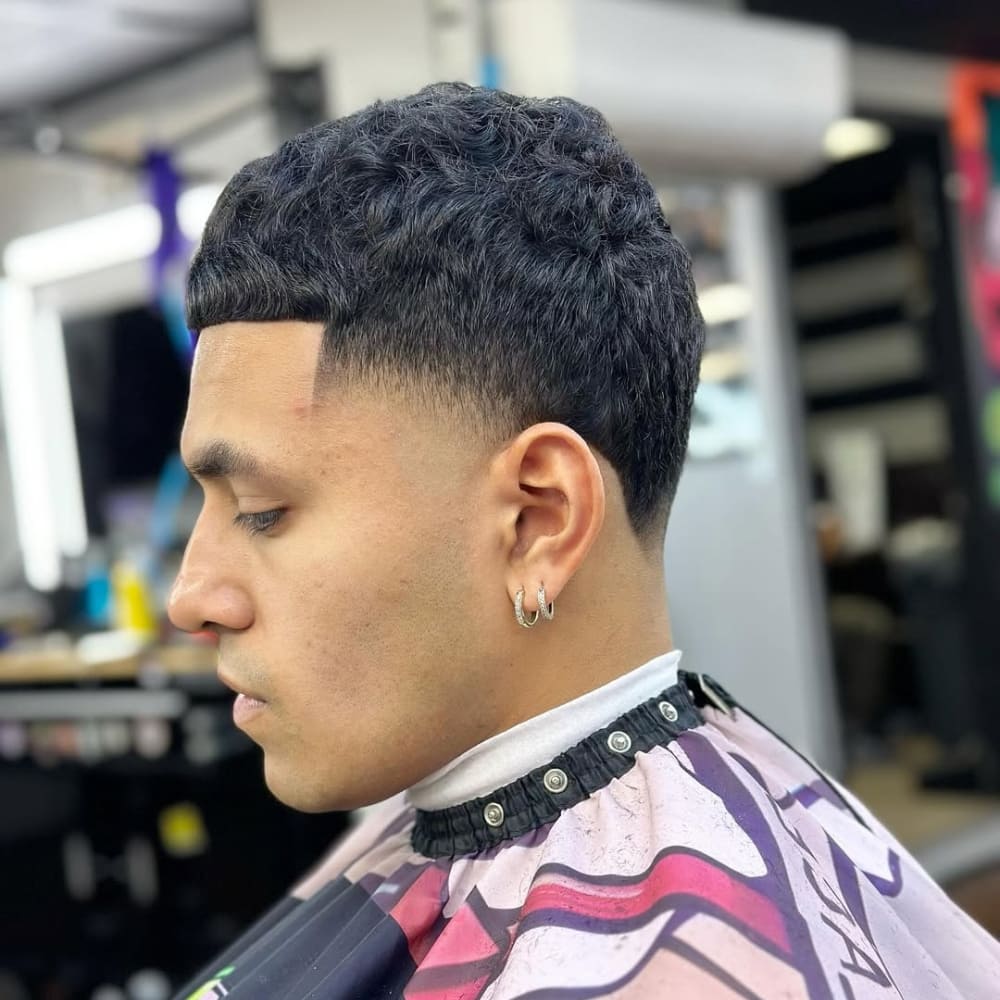
The high taper is a bolder, more defined take on the classic taper, perfect for those seeking a sharp, modern look. Starting closer to the temples than the mid taper, it creates a noticeable contrast between the longer hair on top and the shorter sides.
This higher placement results in a clean, edgy appearance, ideal for styles like buzz cuts, crew cuts, and textured crops. A high taper is a great low-maintenance choice that accentuates facial features, offering a defined, contemporary finish that’s sure to turn heads.
Mid Taper vs High Taper: Key Differences
Choosing between a mid taper vs high taper involves considering several key factors: placement, blend level, styling options, maintenance needs, and suitability for different environments.
Understanding these differences will help you select the perfect taper for your desired look and lifestyle.
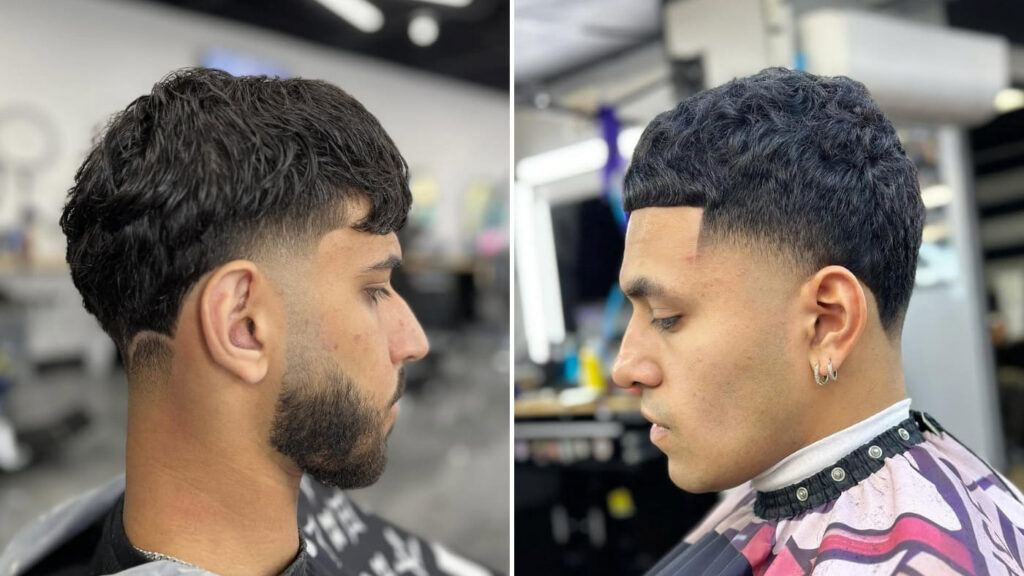
Placement: The Starting Point
The most significant difference between these two styles lies in where the taper begins on the head.
- Mid Taper: Starts at or just above the ears. This creates a moderate, balanced transition between the longer hair on top and the shorter sides. The result is a subtle, less dramatic look, making it a versatile choice for various hair types and face shapes. It’s an excellent option for those who prefer a clean, polished appearance without a particularly bold statement. The hair gradually shortens as it moves down towards the nape of the neck.
- High Taper: Begins much higher, near the temples, often extending to the crown. This creates a more aggressive fade, quickly reducing bulk on the sides and resulting in a sharper contrast between the top and sides. The higher starting point gives the haircut a bolder, more modern, and often more defined edge. This style is ideal for individuals who want a more contemporary look that highlights their facial features.
Blend Level: Subtlety vs. Definition
The starting point directly influences the blend level—how gradual or stark the transition appears.
- Mid Taper: Creates a smoother, more natural blend. The gradual transition makes it ideal for a polished, professional image. The taper blends seamlessly into the neckline and sideburns, providing a clean-cut appearance without being overly conspicuous. It offers a more understated, refined look.
- High Taper: Offers stronger contrast, especially with shorter haircuts. Because the fade starts higher, there’s less blending space, resulting in a sharper, more defined finish. This makes the high taper a standout choice for those who like a more striking and structured appearance. It’s a bolder, more attention-grabbing style.
Styling Options: Complementing Your Haircut
Both tapers work with various haircuts and textures, but their placement influences which styles they complement best.
- Mid Taper: Pairs well with classic styles like quiffs, pompadours, and side parts, where a clean yet natural transition is desired. It also suits medium-length hairstyles requiring some volume on the sides without looking disconnected, and complements curly or wavy hair by providing structure without excessive contrast. It’s a versatile choice for a range of hairstyles.
- High Taper: Complements shorter hairstyles like buzz cuts, crew cuts, and textured crops, where the sharper contrast enhances the overall look. It also works well with slicked-back and undercut styles, as it keeps the sides very clean while leaving ample length on top for styling. The high taper is particularly well-suited for thicker hair, as it effectively removes bulk and creates a more defined shape. It’s ideal for styles where a crisp, clean look is desired.
Maintenance: Frequency of Touch-Ups
Maintenance is a crucial factor to consider.
- Mid Taper: Requires less frequent upkeep (typically every 2-4 weeks). The gradual blend and less abrupt transition allow the haircut to retain its shape and neatness for a longer period.
- High Taper: Demands more regular touch-ups (usually every 1-3 weeks). Because the fade starts higher, any regrowth is more noticeable, making it necessary to visit the barber more often to keep the style fresh and sharp.
Professionalism vs. Edginess: Workplace Considerations
Consider the environment where you’ll be showcasing your new haircut.
- Mid Taper: Generally considered the safer choice for professional or conservative settings. Its gradual fade blends seamlessly with business attire, making it suitable for corporate jobs, formal events, and everyday wear. It projects a polished and refined image.
- High Taper: More edgy and bold. While still clean and polished, it often fits better in creative fields, casual workplaces, and fashion-forward settings. It makes a more contemporary and stylish statement.
By carefully considering these factors—placement, blend, styling, maintenance, and professional appropriateness—you can confidently choose the taper that best reflects your personal style and grooming needs.
Mid Taper vs High Taper: Choosing the Right Taper for You
Deciding between a mid taper vs high taper depends on your personal preferences, face shape, hair type, lifestyle, and how much maintenance you’re willing to invest. This section will help you navigate those choices.
Face Shape Considerations
Your face shape significantly influences how a taper will complement your features.
- Round Faces: A high taper adds definition and visually lengthens the face. The higher fade point and added contrast help create the illusion of angles, which is beneficial for rounder shapes.
- Oval Faces: Both mid and high tapers work well with this balanced shape. Consider whether you want a subtle, classic look (mid taper) or a more modern, defined style (high taper).
- Square Faces: A mid taper softens the strong angles often associated with square faces, creating a more balanced look. A high taper can accentuate a strong jawline, which some may desire for a more chiseled appearance.
- Heart & Diamond Faces: A mid taper is generally the most flattering, as it maintains volume at the sides, balancing the narrower lower portion of these face shapes.
Need help identify your face shape? Check out this guide by Bespoke Unit.
Hair Type and Texture
Your hair type and texture also play a role in which taper will look its best.
- Thick Hair: A high taper helps manage thick hair by removing bulk and creating a more defined, manageable shape. A mid taper can sometimes result in too much volume with thick hair.
- Thin/Fine Hair: A mid taper is often the better choice for thin or fine hair, as the softer transition helps maintain volume and prevents the sides from appearing too sparse.
- Straight Hair: Straight hair is versatile and works well with both mid and high tapers. A high taper adds a sharper, more structured look.
- Curly/Wavy Hair: A mid taper typically blends seamlessly with curly or wavy hair, enhancing the natural texture. A high taper can create a more dramatic contrast but may require more styling product to control volume.
Hairstyle Preferences
Consider the hairstyles you like to wear.
- Mid Taper: Ideal for classic styles like quiffs, pompadours, and side parts. It’s also a good fit for medium-length cuts needing volume on the sides and natural, textured hairstyles.
- High Taper: Best for shorter, structured styles such as buzz cuts, crew cuts, and textured crops. It also complements modern, edgy looks like undercuts and slicked-back styles, and any style where a sharp contrast is desired.
Maintenance and Barber Visits
Think about how much time you want to spend on upkeep.
- Mid Taper: Lower maintenance, usually requiring trims every 2-4 weeks.
- High Taper: Higher maintenance, typically needing touch-ups every 1-3 weeks to maintain its crisp look.
Lifestyle and Work Environment
Your lifestyle and work environment can also influence your choice.
- Mid Taper: A versatile, professional option suitable for most settings, from corporate offices to casual workplaces.
- High Taper: A bolder, more contemporary choice that fits well in creative fields and more relaxed environments.
By carefully considering these factors, you can confidently choose the right taper. Discuss your preferences with your barber for personalized recommendations.
Conclusion: Mid Taper vs High Taper Debate
The choice between the mid taper vs high taper isn’t about which style is “better”—it’s about finding the perfect fit for you. A mid taper offers a balanced, gradual transition, making it an excellent choice for those who value versatility, professionalism, and easy maintenance. Its subtle blend complements a wide range of hairstyles and works well in various settings.
A high taper, on the other hand, delivers a sharper, more defined contrast, ideal for those who prefer a bolder, more modern, and structured look. It makes a statement and is particularly well-suited to certain hairstyles and environments.
Ultimately, the best haircut is the one that makes you feel confident and comfortable. Consider your face shape, hair type, preferred styles, and lifestyle when making your decision. If you’re still unsure, a consultation with a skilled barber is invaluable. They can assess your individual features and hair to recommend the ideal taper that enhances your natural assets and fits seamlessly into your grooming routine.
A great haircut isn’t just about following trends; it’s about choosing a style that reflects your personal aesthetic and empowers you to look and feel your best.

